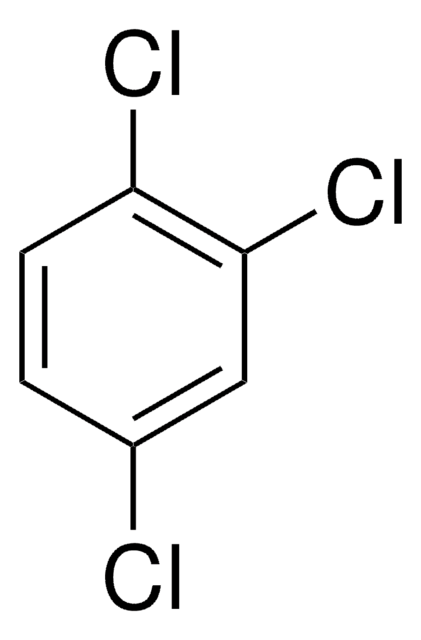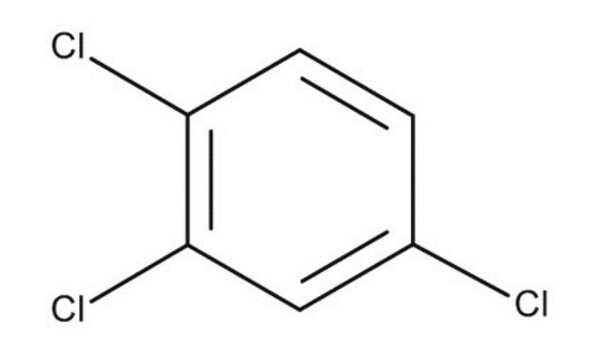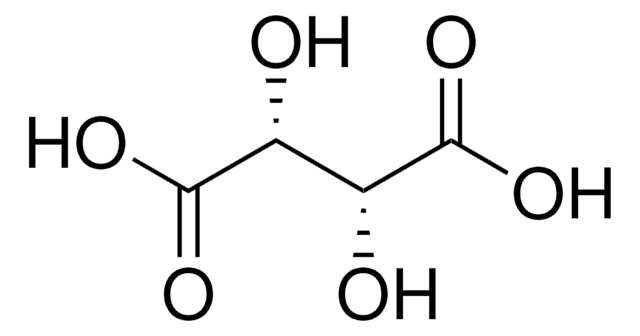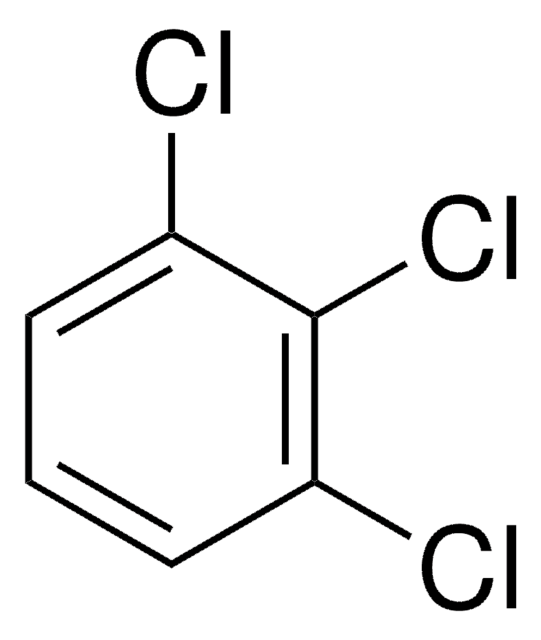About This Item
Recommended Products
vapor density
>6 (vs air)
Quality Level
vapor pressure
1 mmHg ( 40 °C)
product line
ReagentPlus®
Assay
≥99%
form
solid or liquid
autoignition temp.
1060 °F
expl. lim.
6.6 %, 150 °F
refractive index
n20/D 1.571 (lit.)
bp
214 °C (lit.)
mp
16 °C (lit.)
solubility
water: insoluble
density
1.454 g/mL at 25 °C (lit.)
SMILES string
Clc1ccc(Cl)c(Cl)c1
InChI
1S/C6H3Cl3/c7-4-1-2-5(8)6(9)3-4/h1-3H
InChI key
PBKONEOXTCPAFI-UHFFFAOYSA-N
Looking for similar products? Visit Product Comparison Guide
Related Categories
General description
Application
1,2,4-Trichlorobenzene may be used as a solvent in the synthesis of indene-C60 bis adduct, which can find applications in high performance solar cells. It can also be used as a carrier gas in the textile industry.
Legal Information
Signal Word
Warning
Hazard Statements
Precautionary Statements
Hazard Classifications
Acute Tox. 4 Oral - Aquatic Acute 1 - Aquatic Chronic 1 - Skin Irrit. 2
Storage Class Code
6.1C - Combustible acute toxic Cat.3 / toxic compounds or compounds which causing chronic effects
WGK
WGK 3
Flash Point(F)
235.4 °F - closed cup
Flash Point(C)
113.0 °C - closed cup
Certificates of Analysis (COA)
Search for Certificates of Analysis (COA) by entering the products Lot/Batch Number. Lot and Batch Numbers can be found on a product’s label following the words ‘Lot’ or ‘Batch’.
Already Own This Product?
Find documentation for the products that you have recently purchased in the Document Library.
Customers Also Viewed
Our team of scientists has experience in all areas of research including Life Science, Material Science, Chemical Synthesis, Chromatography, Analytical and many others.
Contact Technical Service










